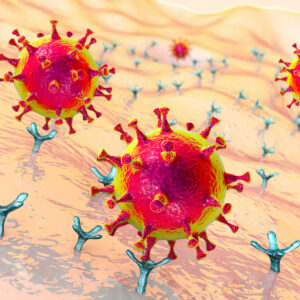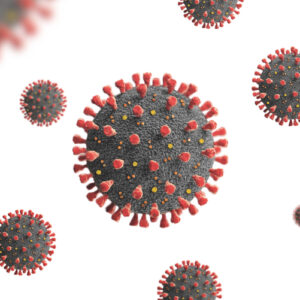Virus Receptors
The Native Antigen Company manufacturers highly purified virus-host cell receptors using state-of-the-art expression and purification techniques. On request we can also undertake custom preparation of recombinant and native proteins for a broad range of disease states.
Virus Receptors Background
Viruses are obligate intracellular pathogens and consequently need to gain entry into a host cell for completion of their life cycle. In order to enter to a cell, viruses attach to specific receptor molecules on the cell surface; molecules which also play an important role in normal cell function. These attachment factors are usually small, charged proteins, lipids, or sugar moieties to which virus particles can bind electrostatically (Boulant, et al., 2015). Different viruses have evolved complex mechanisms to bind to these membrane-associated proteins and gain access to the cell interior. Its currently unknown why certain receptors are preferred by certain viruses, although in some instances the same molecules are targeted by different virus families. Generally though, it has been shown that compared to other membrane proteins, virus receptors have more protein domains, a higher level of N-glycosylation, a higher ratio of self-interaction, more interaction partners and higher expression levels in most of the host tissues (Zhang, et al., 2018).
Enveloped viruses attach to the receptors on the surface of a cell. Secondary receptors may also be utilised to puncture the membrane or for fusion with the host cell. Following attachment, the viral envelope fuses with the host cell membrane, ferrying the naked virus particles into the cell. Viruses may also use different receptors depending on the target cell type and can also enter the cell through endocytosis. Containment within endosomes provides low pH conditions and exposure to proteases which are required to open the viral capsid and release the genetic material inside. Endosomes then transport the virus through the cell and ensure that no trace of the virus is left on the surface, helping to prevent immune recognition (Knipe & Howley, 2013).
Non-enveloped viruses enter the cell through endocytosis where they are ingested by the host cell through the cell membrane. In this case the virus attaches itself onto surface receptors and is engulfed by the cell along with other molecules that the cell normally transports across its membrane. Once inside the cell, the virus escapes the transport vesicle and is freed into the cytoplasm to continue its journey. Attachment to receptors also allows some viruses to directly inject their DNA into the host-cell (Knipe & Howley, 2013).
Consequently, receptor expression on specific cells and tissues of a host is a major determinant of the route of entry of a virus into the host and of the patterns of virus spread and pathogenesis once in the host. Therefore, it is not surprising that many antiviral therapies have focussed on disrupting viral entry mechanisms, often based on the administration of soluble receptors, receptor ligands or antibodies for blocking attachment.
References
Boulant, S., Stanifer, M. & Lozach, P. Y., 2015. Dynamics of Virus-Receptor Interactions in Virus Binding, Signaling, and Endocytosis. Viruses, 7(6), p. 2794–2815.
Knipe, D. M. & Howley, P., 2013. Fields Virology. Sixth ed. LWW.
Zhang, Z., Zhu, Z., et al., 2018. Cell membrane proteins with high N-glycosylation, high expression, and multiple interaction partners are preferred by mammalian viruses as receptors. Bioinformatics.
Our Virus Receptors
SARS-CoV HCoV-NL63 | ||||
SARS-CoV HCoV-NL63 | ||||
SARS-CoV HCoV-NL63 | ||||
Plasmodia | ||||
Plasmodia | ||||
INFA WNV DENV LAFV | ||||
HCV SARS-CoV HIV | ||||
LCMV | ||||
HCV DENV EBOV CMV | ||||
PV HIV hMPV HSV EV WNV JEV DENV | ||||
MAYV ONNV | ||||
MAYV ONNV | ||||
HTLV-1 EBV |
Virus Receptors
Human cell surface receptors (CSRs) are as key proteins for the development of novel therapeutics. To support research in this area, we have produced a panel of recombinant human CSRs that are known to mediate virus entry. In many cases, we also provide the viral proteins that bind the corresponding CSR for molecular interaction studies.
Questions?
Check out our FAQ section for answers to the most frequently asked questions about our website and company.



